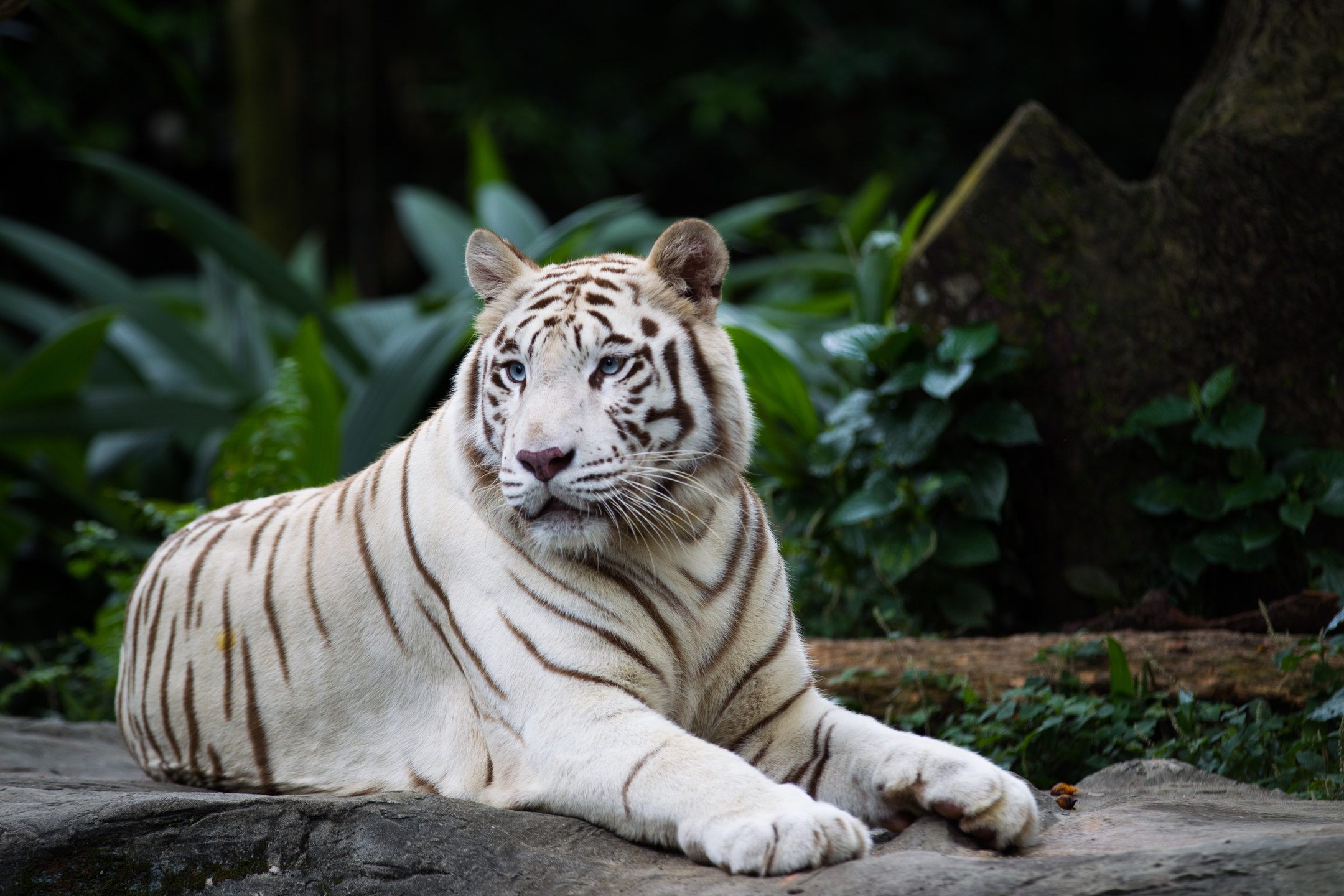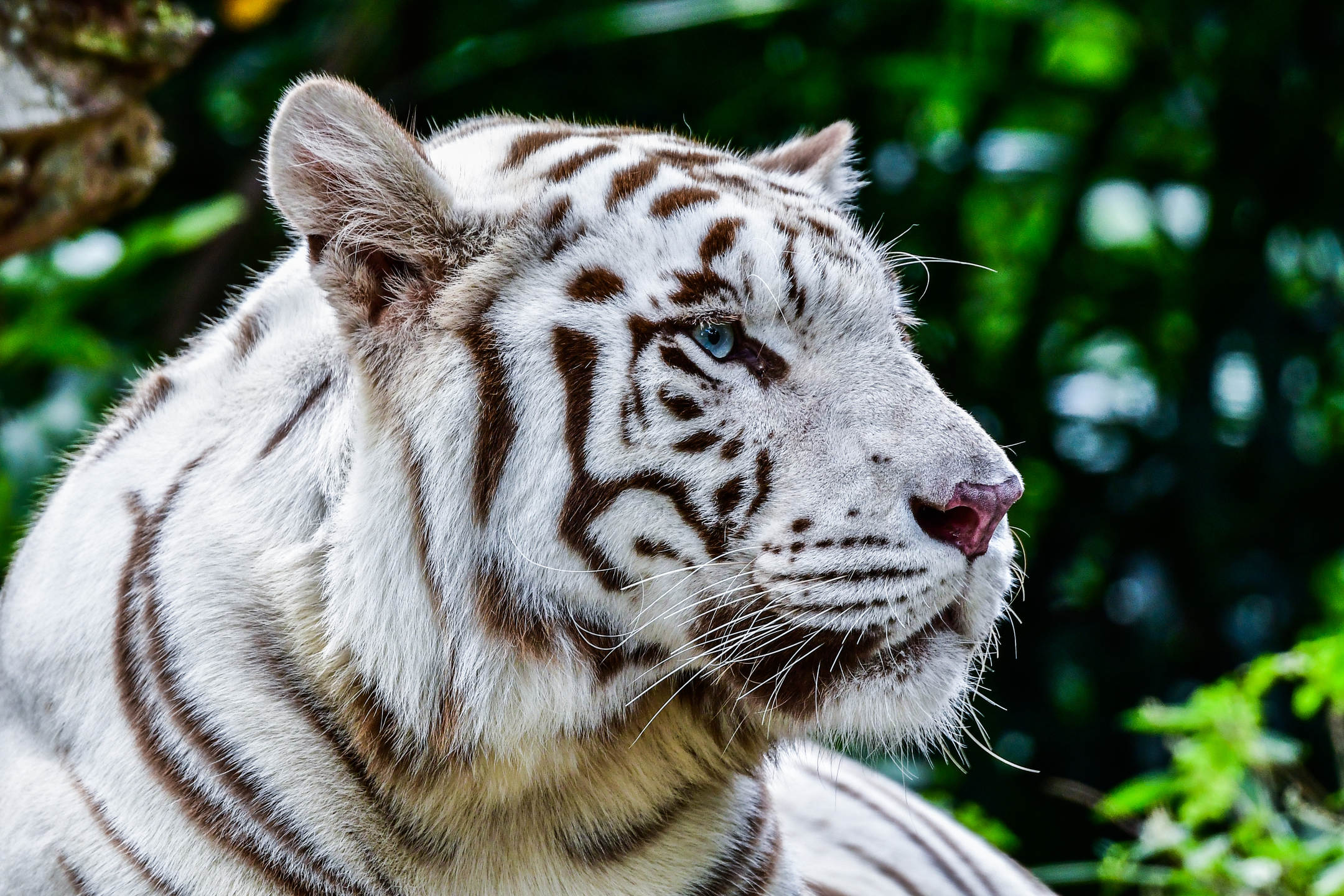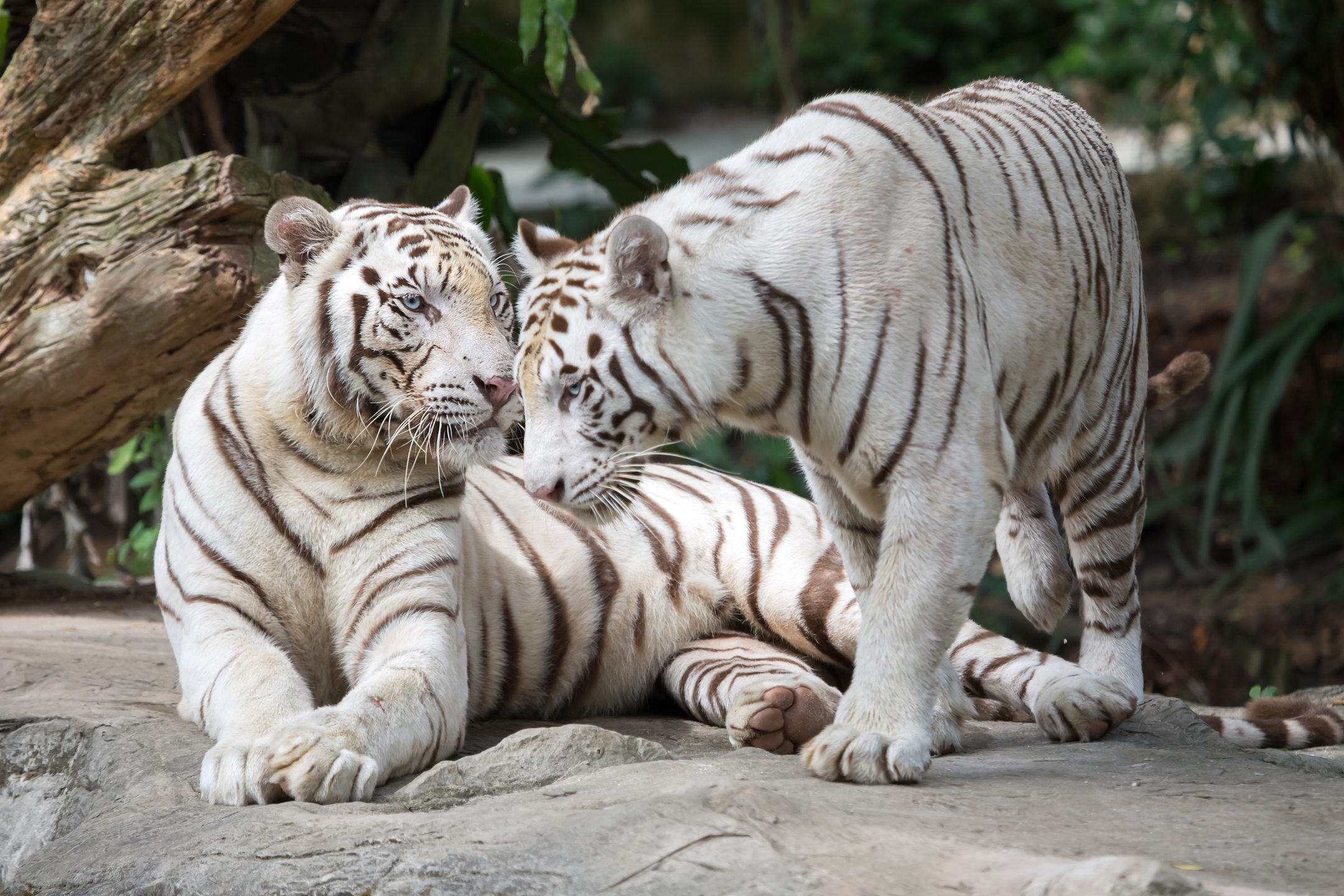Intrigued as to how they come white tigers so incredible?
So without much ado, let’s jump right into it!
Install MyStart Theme for Google Chrome
Distinct Identification Traits
First things first, it is important to make this distinction that white tigers are not separate subspecies. They do not come under royal white tigers or snow tigers. And neither are they albino contrary to popular belief. They are simply just tigers who are born with white fur. Hence, it is safe to say that white tigers are the redheads of tiger kind because they are the white brothers of naturally occurring orange Bengal tigers.

Origin
The scientific name for the white tiger is Panthera Tigris. White tigers were originated in Bengal, Asia, and they used to be found in abundance back in the day in nearby countries like India. Now white tigers are kept in captivity which helps them stay protected and run the risk of extinction.
Rare Species
White tigers are rare because white fur is rare. It is a rare genetic mutation that occurs in the wild as rarely as 1 in 10,000 wild tiger births.
Behavior in the Wild
As white tigers are just tigers, they behave normally in the wild, unaware of their special differentiating quality. However, Their normal behavior leads to the prevention of inbreeding that would be necessary to produce white cubs in abundance.
Unethical Captive Inbreeding
As we read above, because naturally, tigers won’t produce white cubs, white tigers are often forcefully and unethically inbred to increase their numbers. Captive inbreeding of this unique animal builds up higher consequences of neonatal death rates, ordinarily surpassing 80%. Hence, the white tiger population we see today is the result of inbreeding for profit. So no wonder white tiger cubs are high in demand and can easily be sold for $50,000 or higher.

Remaining Cubs
White tigers are usually unethically inbred to track down that one amazing white tiger that the exhibitors can undoubtedly market to people in general. Therefore, the average number of cubs born to get one healthy white tiger cub is 1 in 30. The other 29 cubs can typically be born deformed, or they’re considered the wrong color and euthanized, or they die shortly after birth due to genetic defects.
Growth & Development
White tigers have been observed to grow faster compared to their common orange counterparts. They are even bigger at birth and grow in the same pattern till adulthood. A fully grown white tiger can be merely 2-3 years of age. White tigers can grow to be ten feet long in a span of merely three years. White tigers may weigh up to 570 pounds, equating to the weight of two giant pandas. White tigers in the wild were noted to have a lifespan of almost ten years. However, since white tigers have been kept in captivity, they have lived longer for over 15 years.
White Tiger Stripes
Like the standard tiger species, white tigers’ stripes are likewise exceptional. Much like human fingerprints, no two stripes are the same. In fact, Contrary to popular belief (and this also applies to all other tigers), the tiger stripes are not a pattern over their fur coat. In fact, if shaved, the stripes are a skin pigmentation that comes across their fur and can still be seen.

Unique Qualities
The white tiger may appear darker when exposed to colder temperatures, sharing this quality with Siamese Cats and Himalayan Rabbits. This happens because they carry an enzyme that causes a reaction, turning their fur darker in lower temperatures. White tigers may have naturally sapphire blue eyes, making them look fascinating.
Nature of White Tigers
White tigers can be a lot more aggressive than any other tiger cat type. They are also built to carry this behavior and are more muscular and strong predators than their same species counterparts. The white tiger is a solitary animal and would never be seen in a pack. The animal marks its territory around 20 square miles and can be seen rejoicing in isolation.
Predatory Instincts
Even though the white tiger is a diurnal animal, meaning that it is most active during the daytime, you would not see the animal hunt until after dusk. Like any predator or carnivorous animal, white tigers prefer hunting to eat and don’t like being fed than chasing and playing with their food. Their chase in the wild might include a delicate, disguised methodology with the goal that they aren’t heard or seen by their prey.

The Last White Tiger
The last white tiger found in the wild at any point known was back in 1958, and it was shot dead.
Fan of white tigers? Install White Tiger HD Theme for Google Chrome and get stunning HD wallpaper images of white tigers every time you open a new tab.
Install MyStart Theme for Google Chrome










